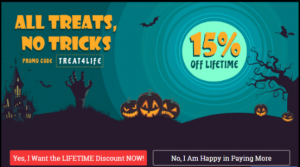Keeping up with the growing number of social media sites and trying to put your small businesses mark on the map can seem overwhelming. What platform does what?, How do I use each one?, and Aren’t they all the same? are most likely questions your business has asked when the word “social media marketing” comes up. By understanding the basics on how to best use social media, small businesses can immediately see and benefit from the value these platforms can bring. Lets dive into the top 5 social media sites your business needs to be active on to maintain a presence in the market.
 Facebook
Facebook
Main Focus: Staying consumer engaged
Facebook hit the scene in 2004 and regardless of what some may think, it still dominates the market for small businesses to stay connected to the “people” who use and support business brands. Facebook for businesses should focus on creating content that keeps the conversation going with the dedicated followers and supporters of your business. When starting with Facebook focus on the following:
- Use photos with questions. Create a post (preferably an image) and ask questions such as “What would be a good caption for this?”
- Incorporate people who use your brand. When posting mention a customer who follows the page or “shout out” a person who recently commented.
- Engage with questions. Keep the content focused on feedback from customers and keep them offering their perspectives.
 Twitter
Twitter
Main focus: Offering perspective
Twitter is also a long standing platform with 317 Million active users each month. Twitter has become increasingly popular for brands and companies to offer their perspectives on hot topics or using “hashtags” pointing to relevant issues people are talking about on their platform. Twitter offers a short character count method to express a thought, stance, or comment on current events and news. When starting with Twitter focus on the following:
- Use for news about your niche. Share news or other “stories” relevant to your niche that users can gain insight or information from.
- Use polls and ask questions. Polling the audience is a great way to keep users engaged and offer opinions. Users will also share those polls with others growing your presence.
- Ask for a “Re-Tweet” or just say “RT”. A Re-tweet is someone else sharing your “tweet” or “post” giving you credit and exposure.
 Instagram
Instagram
Main Focus: Inside scoop
Instagram was the first platform that simply asked users to post photos and small (if any) captions. Instagram has now expanded to a major source of website traffic referral and business exposure. By sharing photos of your business, companies should use Instagram as a “behind the scenes” look at their brand offering users a view they can’t get on other platforms. When starting with Instagram focus on the following:
- Share content that is “about your brand.” Post photos of design sketches, a team meeting, or something funny that happened outside your office walls. This brings a “behind the scene look.”
- Use interesting photos. Post images that look artsy or different to catch your customer’s’ eyes. Have fun with the ideas you can create.
- Use bio and links to relevant offerings. Update the “bio” section often giving users a direct link and upcoming offering that they don’t want to miss out on.
 Pinterest
Pinterest
Main Focus: Educating
Pinterest is a play on the word “Interest” with the idea of “pinning” something that you like and want to save for reading, trying, or even learning more about in the moment or down the road. Users create “boards” that they “pin” items to so people can easily find whatever strikes their fancy. Businesses can use Pinterest to educate their audience on a variety of related “niche” ideas. When starting with Pinterest focus on the following:
- Be an educator. Share relevant information and facts that people can learn ideas, tips, tricks, and other facts from simply looking at your boards.
- Build on networks like yours. Add other contributors to your “board” to further expose your brand and use that exposure as a traffic source to your site.
- Share inspirational posts. Inspiring other people is one of the most common reason to “pin,” and therefore doing the same can be helpful to your brand.
 Google+
Google+
Main Focus: Location Location Location
Google+ is a way for businesses and customers to find each other, learn more about each other, and tell other people about each other. Small businesses who tap into Google+ can find ways to increase foot traffic to their storefront, offer visitors a place to share their thoughts, and also allows businesses to share relevant information about their brand to help promote and increase website rankings. Google+ for businesses is created after a business account on Google has been created. When starting with Google+ focus on the following:
- Bring people to YOU. Google+ offers location services and direct links to your business platform or portfolio.
- SEO. SEO or Search Engine Optimization is highly crucial to any website for any business. By joining and linking content on Google+, SEO gets a jumbo boost.
- Use for networking with customers and influencers. Google calls these “circles” which allows you to categorize who are your customers and who are your business influencers. This helps businesses tailor the content to both groups maximizing relevancy on the platform.
As you have read above, there are many social media platforms out there for small businesses and brands. While some may think it’s simply enough to “share the same message” across all platforms, or that “one site fits all” is the stance to take, such is not the case. By understanding the differences between platforms, and the best ways to utilize each, businesses can offer users varied information and a push to follow and engage with your company in multiple ways. Starting out can be daunting, but after the first post, tweet, pin, circle or hashtag, small businesses will find the effort was worth the outcome.
Business & Finance Articles on Business 2 Community(40)
Report Post



